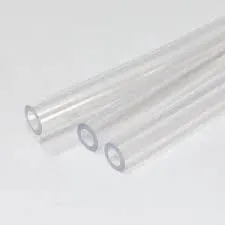Nov . 29, 2024 21:00 Back to list
Durable HDPE Rainwater Pipes for Effective Drainage Solutions and Environmental Sustainability
The Benefits of Using HDPE Rain Pipes in Modern Drainage Systems
In today’s rapidly urbanizing world, effective stormwater management has become a pressing concern for city planners, engineers, and environmental advocates alike. With climate change leading to more extreme weather events, the need for robust drainage solutions is paramount. One material that has gained significant popularity in the construction of rainwater drainage systems is High-Density Polyethylene, commonly known as HDPE. This article explores the advantages of using HDPE rain pipes, shedding light on why they are increasingly being adopted in modern drainage designs.
What is HDPE?
High-Density Polyethylene is a thermoplastic polymer known for its high strength-to-density ratio. This material is widely used in a variety of applications, ranging from packaging to industrial products, and has proven particularly effective in the construction of drainage pipes. HDPE pipes are manufactured through a process that involves the polymerization of ethylene, resulting in a material that is both durable and flexible.
Durability and Longevity
One of the primary advantages of HDPE rain pipes is their exceptional durability. Unlike traditional materials such as concrete or PVC, HDPE is resistant to corrosion, rust, and chemical damage. This property ensures that HDPE pipes can withstand harsh environmental conditions, including acidic or alkaline soils, without degrading over time. Moreover, HDPE pipes have a long service life, often exceeding 50 years, which reduces the need for frequent replacements and minimizes maintenance costs.
Lightweight and Easy to Handle
HDPE rain pipes are significantly lighter than their concrete or metal counterparts. This lightweight nature makes them easier to transport, handle, and install. In many cases, installation can be executed with minimal heavy machinery, leading to lower labor costs and reduced environmental disturbance. The ease of installation not only saves time but also contributes to a more efficient construction process.
Flexibility and Adaptability
hdpe rain pipe

The flexibility of HDPE allows for easier designs that can accommodate various installation environments. Unlike rigid materials, HDPE can bend without breaking, making it ideal for projects that involve complex layouts or uneven terrain. This adaptability also makes HDPE rain pipes suitable for a wide range of applications, including residential, commercial, and agricultural drainage solutions.
Environmental Considerations
The use of HDPE in rainwater drainage systems is not just beneficial from a functional standpoint; it also has positive environmental implications. HDPE is 100% recyclable, which means that at the end of its life cycle, it can be reprocessed into new products rather than ending up in landfills. Additionally, the lightweight nature of HDPE reduces emissions during transportation, contributing to a lower overall carbon footprint for construction projects.
Cost-Effectiveness
When comparing upfront costs, HDPE rain pipes may sometimes present a higher initial investment than traditional materials. However, their longevity, low maintenance needs, and reduced labor costs often result in a lower total cost of ownership in the long run. For municipalities and businesses focused on budgetary efficiency, HDPE pipes represent a smart investment.
Performance in Stormwater Management
HDPE rain pipes offer excellent hydraulic performance due to their smooth inner surfaces, which minimize friction losses and allow for efficient water flow. This feature is critical in preventing flooding during heavy rain events. The flexibility to design customized systems that mimic natural water flow patterns further enhances their efficiency in stormwater management.
Conclusion
In summary, HDPE rain pipes are emerging as a go-to solution for effective drainage systems in a world increasingly challenged by climate change and urbanization. Their durability, lightweight nature, flexibility, recyclability, and cost-effectiveness make them an ideal choice for managing stormwater efficiently. As cities strive to develop more sustainable infrastructures, HDPE rain pipes will undoubtedly play a pivotal role in shaping the future of drainage systems. By investing in these innovative materials, municipalities and developers can not only enhance their drainage capabilities but also contribute to a more sustainable and resilient environment.
-
Premium Glossy PP Rigid Sheet – Durable & Versatile
NewsAug.07,2025
-
High-Quality HDPE Sheet | Durable Plastic Panels
NewsAug.06,2025
-
High-Precision PVC Rigid Sheets for Vacuum Forming | AI-Optimized
NewsAug.05,2025
-
Durable PVC-M Water Supply Pipes | 60-Year Life
NewsAug.04,2025
-
Premium HDPE Water Supply Pipes: Durable & Leak-Proof
NewsAug.03,2025
-
Premium PVC-M Water Supply Pipe - Durable & Efficient
NewsAug.02,2025

